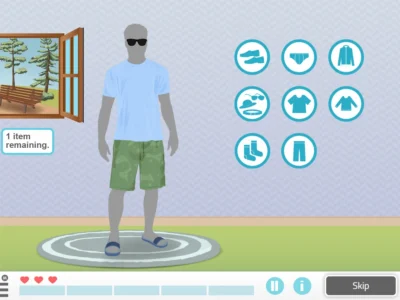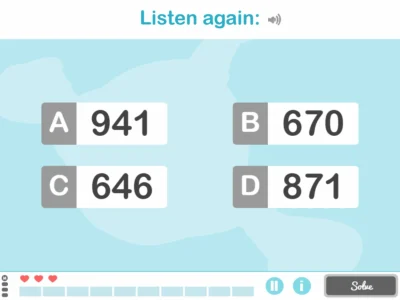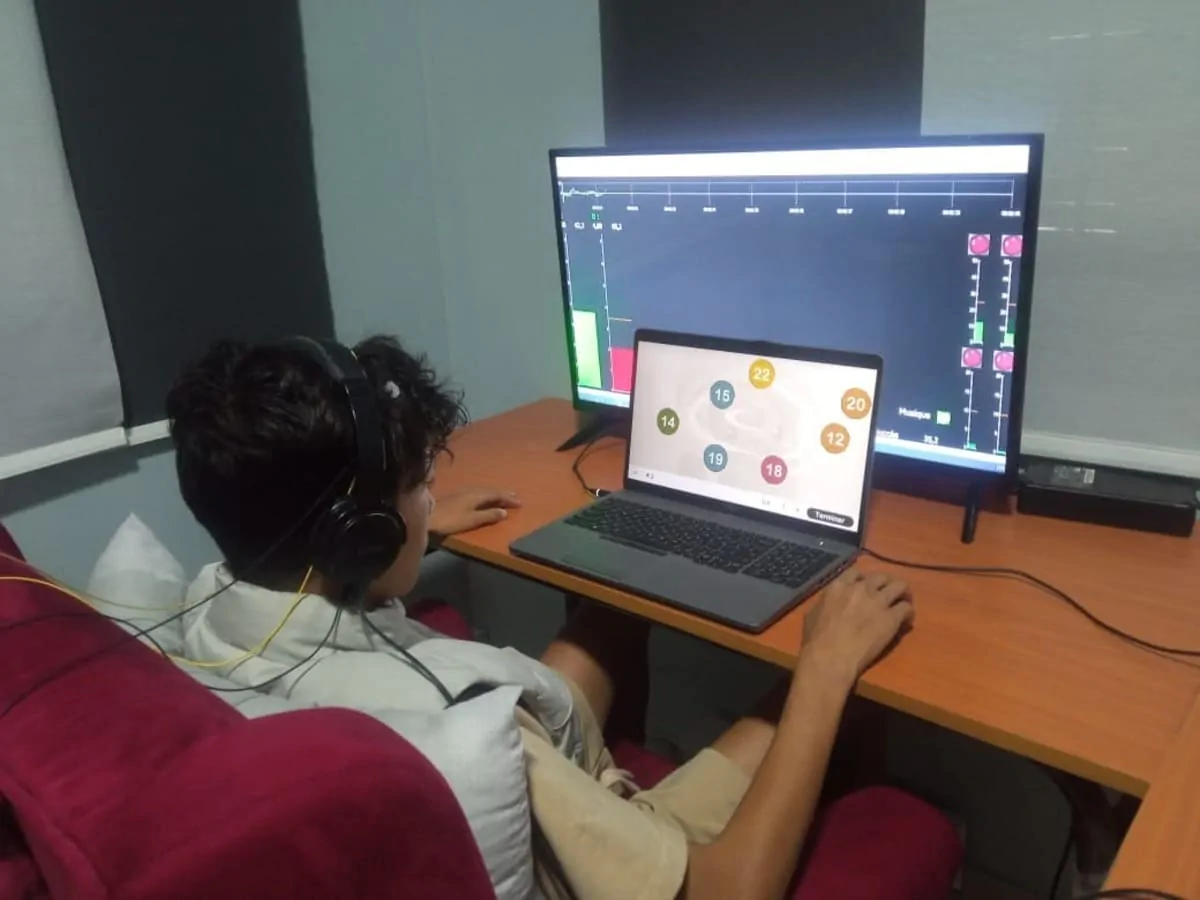In this article, neuropsychologist Diana Carolina Gómez Blanco explores in depth a rare neuropsychological disease called Gerstmann Syndrome.
What is Gerstmann Syndrome
Gerstmann syndrome is a rare neurological and neuropsychological disorder, which consists of a tetrad of symptoms that include:
- Impaired performance of calculations (acalculia),
- discrimination of one’s own fingers (finger agnosia),
- writing (agraphia)
- and impaired distinction between left and right (left-right disorientation).
It is a rare neurological disorder that was identified by Austrian neurologist Kurt Gerstmann in 1940, and its study has provided valuable insights into brain localization and cognitive functions. This syndrome is typically associated with damage to the posterior parietal region of the brain, particularly in the left parietal lobe.
Symptoms of Gerstmann Syndrome
Gerstmann syndrome is a disorder that affects several cognitive abilities essential for daily life; it is specifically made up of a tetrad of symptoms, which include:
- Finger agnosia: Difficulty identifying or recognizing the fingers of the hand. Those affected by finger agnosia cannot say which finger is being pointed to, despite having no trouble seeing or touching them.
- Acalculia: Difficulty performing mathematical calculations, which may include both simple and complex operations. Affected individuals may be unable to add, subtract, multiply, or divide, even though they were previously able to perform these tasks without problems.
- Agraphia: Loss of the ability to write, despite no motor problems. Those with agraphia may be unable to form words correctly, despite retaining language knowledge.
- Right-left disorientation: The inability to distinguish between right and left, even in simple situations. This can lead to difficulties orienting in space and performing everyday activities.
It may also sometimes include the presence of:
- Visuospatial dysfunction: Alterations in spatial perception and visual organization. Often, people who experience it have difficulty understanding the relationship between objects in space.

Subscribe
to our
Newsletter
Causes and brain localization of Gerstmann Syndrome
Gerstmann syndrome is generally associated with damage to the left parietal lobe, especially the angular gyrus. This lobe is fundamental for sensory integration and body representation, and any damage to this region can lead to the characteristic deficits of the syndrome.
The causes of this syndrome can be due to both structural factors and neurobiological processes. Although in its early descriptions Gerstmann syndrome was mainly associated with lesions localized in the angular gyrus of the left parietal lobe, recent research has shown that this disorder can be caused by a variety of factors, which include acquired brain lesions and neurodegenerative disorders.
1. Acquired brain injuries
Acquired brain injuries are one of the main causes of Gerstmann syndrome. These include a variety of pathological events that can damage the brain structures involved in the syndrome’s specific cognitive functions. The following are some of the pathological events that can cause the syndrome:
Strokes (CVA)
Strokes, CVA or stroke, are one of the most common causes of Gerstmann syndrome. A stroke in the left parietal lobe, particularly in the angular gyrus area or the cortex associated with perception and calculation, can damage the structures responsible for the cognitive functions implicated in the syndrome, such as calculation, writing and finger recognition. Strokes can result from obstructions (ischemic stroke) or hemorrhages (hemorrhagic stroke), and the severity of the damage depends on the extent and location of the affected brain area.
Traumatic brain injuries
Traumatic injuries to the head can affect brain areas responsible for the cognitive and motor functions involved in Gerstmann syndrome. Damage from accidents, falls or blows to the head can cause contusions or cerebral hemorrhages, especially in the parietal lobe, interrupting communication between different brain regions. In these cases, direct brain damage or pressure on brain structures can trigger the classic symptoms of the syndrome.
Brain tumors
Tumors in the left parietal lobe can also cause Gerstmann syndrome. A tumor can compress the brain areas responsible for the functions affected by the syndrome, leading to difficulties in calculation, writing and spatial perception. The speed of onset and the nature of the symptoms may depend on the tumor’s growth rate and its precise location within the brain.
Brain infections
Infections such as encephalitis or meningitis can affect various areas of the brain, including those that regulate spatial perception and cognitive abilities. The resulting brain inflammation can alter neuronal connections, producing deficits similar to those observed in Gerstmann syndrome. These infections can damage both brain tissue and the neural networks involved in higher cognitive function.
2. Neurodegenerative diseases
Although Gerstmann syndrome is commonly associated with acquired lesions, it can also result from neurodegenerative diseases that progressively affect the brain. These conditions usually produce gradual decline that impacts the cognitive and motor abilities of those affected. Among the most relevant neurodegenerative diseases that may be linked to Gerstmann syndrome are:
Frontotemporal dementia (FTD)
In some cases, people with frontotemporal dementia, a neurodegenerative disease that initially affects the frontal and temporal lobes, can also develop symptoms compatible with Gerstmann syndrome. FTD affects executive capacities, personality and cognitive functions, and may include alterations in calculation, writing and spatial perception skills. Although the initial damage occurs in the frontal lobe, over time involvement of parietal areas can lead to deficits related to Gerstmann syndrome.
Alzheimer’s disease (AD)
Although Alzheimer’s disease is primarily characterized by memory loss and generalized cognitive decline, it can also produce symptoms related to Gerstmann syndrome in advanced stages. In Alzheimer’s disease, lesions are distributed more diffusely but eventually affect the parietal lobe, which could contribute to the emergence of the specific deficits of this syndrome. The degenerative process in the areas associated with calculation and writing can give rise to symptoms that resemble those of Gerstmann syndrome.
3. Chronic cerebrovascular diseases
Chronic cerebrovascular diseases, such as uncontrolled arterial hypertension, can lead to progressive structural changes in the brain that affect the regions responsible for complex cognitive functions. People with a history of multiple small strokes (lacunar infarcts) may experience cumulative damage in parietal areas, which increases the risk of developing Gerstmann syndrome as the disease progresses.
4. Congenital anomalies and developmental disorders
In rare cases, Gerstmann syndrome may be associated with congenital brain anomalies that affect the structure of the left parietal lobe or the neural connections that facilitate the cognitive functions involved. Disorders such as dyslexia or visual agnosia may be present in individuals with neuroanatomical variations that alter how the brain processes information. However, these cases are exceptional, as Gerstmann syndrome is generally linked to acquired lesions or neurodegenerative diseases.
5. Genetic and neurobiological factors
Although the specific genetic causes of Gerstmann syndrome are not fully understood, recent research suggests that certain neurobiological and genetic factors could predispose an individual to develop this disorder, especially in the context of neurodegenerative diseases. Some studies have indicated that genetic disorders affecting neuronal connectivity and higher brain functions could contribute to the syndrome’s development. However, the majority of documented cases of Gerstmann syndrome have been caused by acquired lesions or progressive brain diseases, rather than hereditary genetic factors.
6. Interactions between environmental and genetic factors
In addition to genetic factors and neurodegenerative diseases, the interaction between environmental factors (such as chronic stress or previous infections) and genetic predispositions could be an important underlying factor in the development of Gerstmann syndrome. Exposure to environmental factors, such as repeated brain trauma or prolonged medical conditions, may trigger or accelerate the deterioration of cognitive functions, especially when combined with a genetic predisposition to neurological disorders.
Diagnosis of Gerstmann Syndrome
The diagnosis of Gerstmann syndrome is based on the clinical assessment of symptoms and the patient’s medical history. Neurological examinations, which include tests of spatial perception, object recognition and mathematical skills, are essential to identify the specific cognitive deficits. In addition, brain imaging such as magnetic resonance imaging or computed tomography can be performed to identify damage in the left parietal lobe and other related areas.
It is important to note that the diagnosis of Gerstmann syndrome can be complicated, as its symptoms may overlap with other neurological or cognitive disorders, such as visual agnosia or language disorders. Therefore, the diagnosis should be made by a team of medical and neuropsychological professionals.
Treatment and management of Gertsmann Syndrome
There is no specific treatment for Gerstmann syndrome, as it is a neurocognitive disorder caused by structural brain damage. However, symptom management may include neuropsychological rehabilitation. These therapies are designed to help people improve their cognitive skills and adapt to the limitations of the syndrome.
Some of the strategies used in rehabilitation include:
- Occupational therapy: This therapy focuses on helping affected individuals recover essential motor and cognitive skills for daily activities. Occupational therapists teach these people to organize their activities so they can overcome difficulties related to calculation, writing and spatial orientation.
- Mathematical and language training: Affected individuals may undergo cognitive training sessions that help them recover the ability to perform calculations and write correctly. These sessions may involve repeating simple or complex tasks until these people improve their skills.
- Sensory integration therapy: This type of therapy focuses on improving spatial perception and the ability to identify and coordinate the limbs. Tactile stimulation and practicing motor tasks can be useful for people with finger agnosia and right-left disorientation.
In some cases, treatment may include medications to control associated symptoms such as anxiety or depression, which are common in people with neurological disorders.
Prognosis of Gerstmann Syndrome
The prognosis of Gerstmann syndrome varies depending on the underlying cause and the severity of the brain damage. In many cases, people with this rare condition experience partial improvement of symptoms as they undergo cognitive rehabilitation. However, in some cases, deficits may persist long-term and significantly affect the patient’s quality of life.
The prognosis will also depend on how quickly it is identified and treated. If the damage is caused by a stroke or another treatable condition, these people may experience partial or even complete recovery. On the other hand, if the damage is the result of a neurodegenerative disease, such as dementia, the prognosis may be more severe and the course less favorable.
Conclusion
Gerstmann syndrome is a rare neuropsychological disorder that affects several fundamental cognitive abilities, such as calculation, writing, spatial perception and limb orientation. Although uncommon, its study has been crucial for understanding the relationship between brain functions and cognitive skills. While there is no specific treatment, neuropsychological rehabilitation can be beneficial to improve symptoms and the quality of life of affected individuals.
As research in neuroscience and neuropsychology advances, knowledge about Gerstmann syndrome is expected to expand and translate into better therapeutic and diagnostic approaches. Early identification and appropriate treatment are essential to optimize the prognosis of people affected by this disorder.
Bibliography
- Gerstmann, K. (1940). Zur Lehre der Agnosie [On the teaching of agnosia]. Archiv für Psychiatrie und Nervenkrankheiten, 106(2), 78-92.
- Smith, M. E., Johnson, P. E., & Lee, R. S. (2020). Neural connectivity in Gerstmann syndrome: Insights from functional neuroimaging. Journal of Neuropsychology, 42(1), 125-139. https://doi.org/10.1080/152990001
- Zaidel, E. (2008). The parietal lobes and the syndrome of Gerstmann. Neuropsychology Review, 18(4), 295-309. https://doi.org/10.1007/s11065-008-9071-2
If you liked this blog post about the Gerstmann Syndrome, you will surely be interested in these NeuronUP articles:
“This article has been translated. Link to the original article in Spanish:”
Comprendiendo el Síndrome de Gerstmann






 Overcoming Cognitive Challenges: The Unique Approach of BIQAF Psychology
Overcoming Cognitive Challenges: The Unique Approach of BIQAF Psychology
Leave a Reply